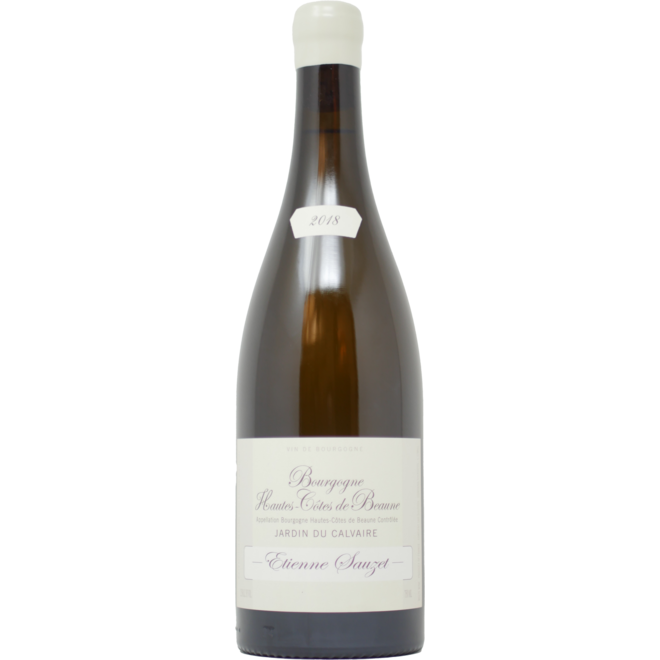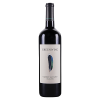2018 Etienne Sauzet Hautes Cotes De Beaune Jardin Du Ca
2018 Etienne Sauzet Hautes Cotes De Beaune Jardin Du Ca This 2018 vintage is approachable and ready-to-drink with fresh cherry notes and low tannins. Typified by the Gamay-based wines of Beaujolais, this style doesn’t necessarily need food to be enjoyed.
Bourgogne Hautes Cotes de Beaune
Bourgogne Hautes Cotes de Beaune is the appellation for red, white and rosé wines produced from vineyards on the hautes cotes (high slopes) of the southern Cote d’Or. Created in 1961, it is clearly distinguished from the more-prestigious vineyards located on the mid-slopes below, which fall under the 18 communal and eight Grand Cru appellations of the Cote de Beaune.
The majority of Hautes Cotes wines are red, made predominantly from Pinot Noir. Chardonnay is the most commonly used grape for white wines, which account for 20 percent of the appellation’s output. Rosé (or clairet) wines are produced from Pinot Noir and form only a fraction of the total production.
The terroir of the Hautes Cotes, particularly the climate, differs noticeably from that of the lower slopes to the east. The higher altitude of the vineyards (920–1800ft/280–550m) means that the grapes sometimes struggle to ripen fully, leading to less richly flavored, less-complex wines. To minimize the impact of this cooler climate, the Hautes Cotes vineyards are most often planted on south- and west-facing slopes which benefit from maximum exposure to the sun’s warmest rays. In terms of soil make-up, the vines here are largely planted on sites with marlstone sub-strata, rather than the chalky soils which dominate the lower slopes. That said, there are clear outcrops of bright white limestone in various places, marked out by the quarries which dot the landscape.
The Bourgogne Hautes Cotes de Beaune appellation covers roughly 1975 acres (800ha), spread across 30 communes and producing just under five million bottles every vintage.
The corresponding appellation for the northern half of the Cote d’Or is, unsurprisingly, Bourgogne Hautes Cotes de Nuits. The dividing line between these two viticultural areas is the village of Magny-les-Villers, below the northern slopes of the Montagne de Corton.
Related products
Burgundy
2019 Nicolas Rossignol Volnay 2019 Nicolas Rossignol Volnay is medium to full-bodied with aromas of plums, wild berries, warm spices and licorice, fleshy and layered, with fine concentration, lively acids and an ample core of fruit. Concluding with elegantly chalky grip on the finish, this cuvée has always been one of the more charming and immediate [...]
2020 Jean-Claude Bachelet Saint-Aubin 1er Cru Blanc 2020 Jean-Claude Bachelet Saint-Aubin 1er Cru Blanc Aromas of sweet orchard fruit, dried white flowers, beeswax and freshly baked bread preface the 2020 Saint-Aubin 1er Cru Charmois, a medium to full-bodied, satiny and precise wine with a bright core of fruit, lively acids and a long, saline finish. [...]
Chateauneuf-du-Pape
2017 Domaine Berthet Rayne Chateauneuf-du-Pape Cuvee Cadiac 2017 Domaine Berthet Rayne Chateauneuf-du-Pape Cuvee Cadiac Fresh blackcurrant, licorice and flowers on the nose. Juicy, fresh and intensely flavored, with firm acids contributing to the impression of backbone. Quite aromatic in the mouth. Whereas northern Rhône wines are produced primarily from Syrah, Viognier, Marsanne, and Roussanne, southern Rhône believes in more diversity. Wines [...]
2021 Jean-Marc Brocard Chablis 1er Cru Vau De Vey 2021 Jean-Marc Brocard Chablis 1er Cru Vau De Vey, is a clear and precise wine with notes of salt and anise,Gold-green color,The finish is soft and warm. Pair with seafood, shellfish, or white meat, grilled or in a cream sauce. One of the most popular and [...]
 Trinite Estate Acaibo - Cabernet Bordeaux Blend 2016
Trinite Estate Acaibo - Cabernet Bordeaux Blend 2016 


